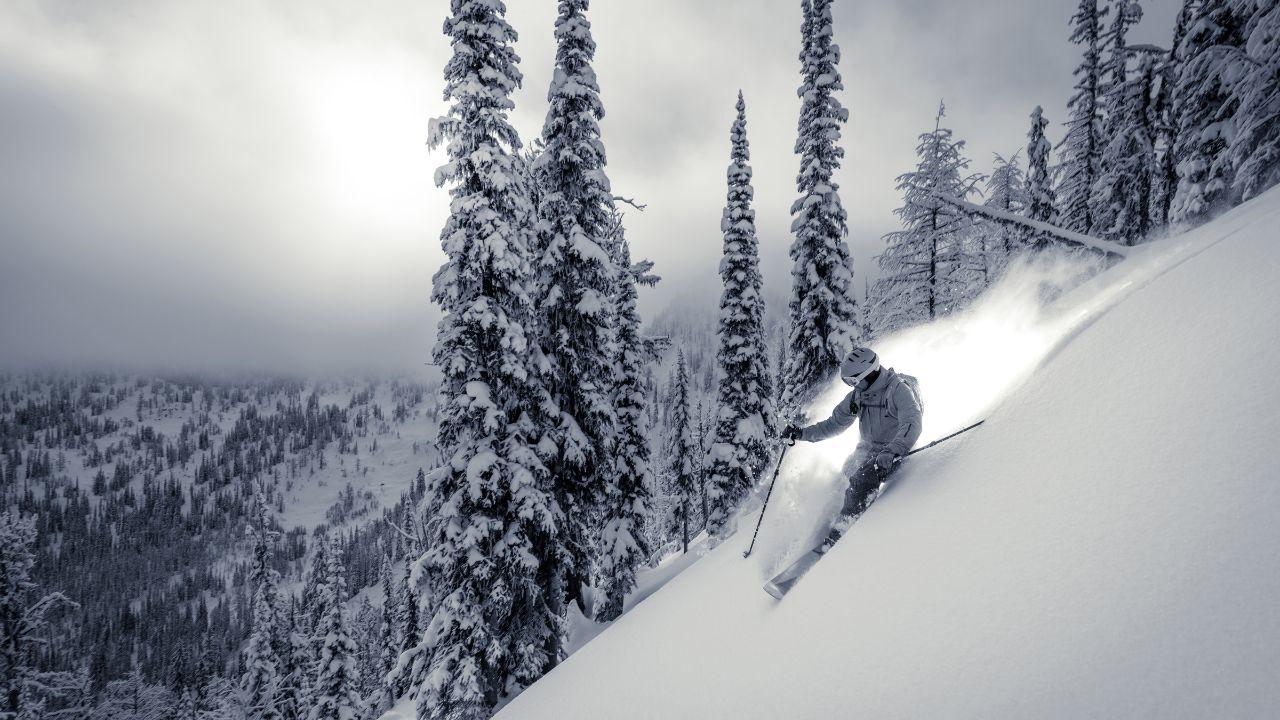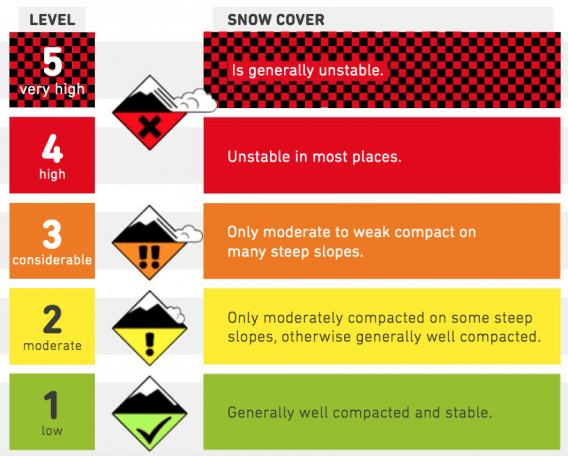Off-piste safety
To enjoy the powder fields safely, discover all our tips for a safe experience.

The mountain in winter offers an extraordinary playground for ski enthusiasts, especially for those seeking the excitement of freeride. However, skiing off the marked slopes requires a responsible and well-equipped approach to ensure a safe and memorable experience. In this article, we will explore the essentials of off-piste safety and guide you through the thrilling world of freeride skiing.
Off-piste skiing is a risky practice due to the risk of avalanche that can surprise skiers. Indeed, off the beaten track, the practice of powder can trigger avalanches and take skiers under meters of snow. It is essential, before any off-piste outing, to learn about the risks of avalanche.
The European avalanche risk scale
The European avalanche risk scale is an essential tool used in mountainous regions to assess and communicate avalanche hazard levels. Designed to raise awareness of dangerous weather and snow conditions, this scale helps make informed decisions about mountain safety.
This scale is divided into five levels, ranging from Level 1 to Level 5, from low to very high risk. Each level is associated with specific conditions of snow cover stability, weather and other factors that affect the potential for avalanche triggering. The classification takes into account the probability of avalanches, their expected size and the possible consequences for people and infrastructure.

Source : snowsafe.co.uk
How to properly equip off-piste?
Well equipped off-piste is essential to evolve safely in sectors where nature can be unpredictable. Proper equipment is the key to safety and fun in freeride. Freeride skis, designed to excel in powder and rough terrain, offer exceptional stability and handling. Properly adjusted quality fasteners are crucial to avoid accidents.
Freeride skiers should also invest in a set of safety equipment, including a sturdy helmet, airbag bag, shovel, probe, and of course, DVA. These tools can make a difference in an emergency, contributing to individual and collective safety.
The off-piste ski equipment includes a DVA (Avalanche Victim Detector), a probe, a shovel and an airbag bag.
The DVA
At the heart of off-piste safety equipment is the Avalanche Victim Search Device (DVA). This device emits radio signals to locate a skier buried under the snow. Each member of the group should be equipped with a Avalanche Transceiver, and regular practice of using this device is essential to reduce emergency response time.
The shovel and the probe
The shovel and probe are two equally crucial tools. A light but robust folding shovel makes it easy to quickly clear snow, while a probe can accurately locate the victim. These instruments, combined with the proper training, significantly increase the chances of rescue in the event of an avalanche.
The airbag bag
Another safety element increasingly adopted by freeride enthusiasts is the airbag bag. In case of avalanche, deploying this airbag can significantly increase the buoyancy of the skier, reducing the risk of deep burial under the snow. The airbag bag has become an indispensable addition to safety equipment, providing an extra layer of protection in potentially dangerous conditions.
By investing in a quality DVA, a suitable shovel and probe, as well as a reliable airbag bag, freeride skiers can significantly improve their safety in the mountains. These tools are not just accessories, but vital devices that can save lives and ensure a more serene off-piste experience.
To enjoy the powder fields, discover all our equipment online as in store for your freeride ski rental.